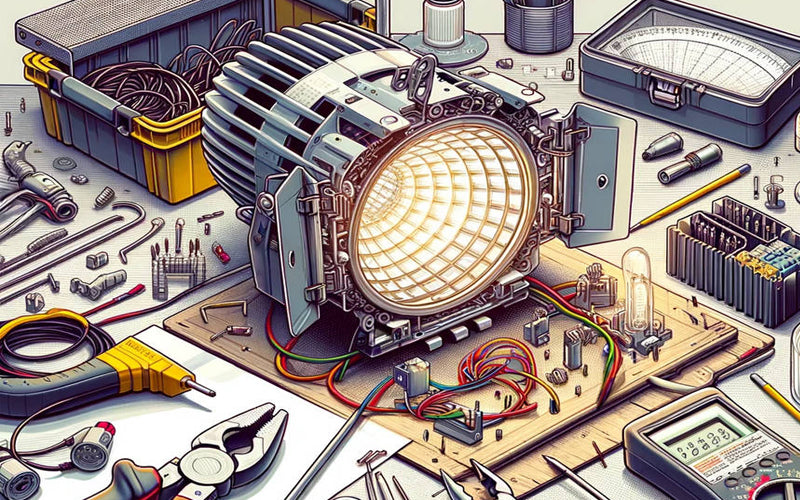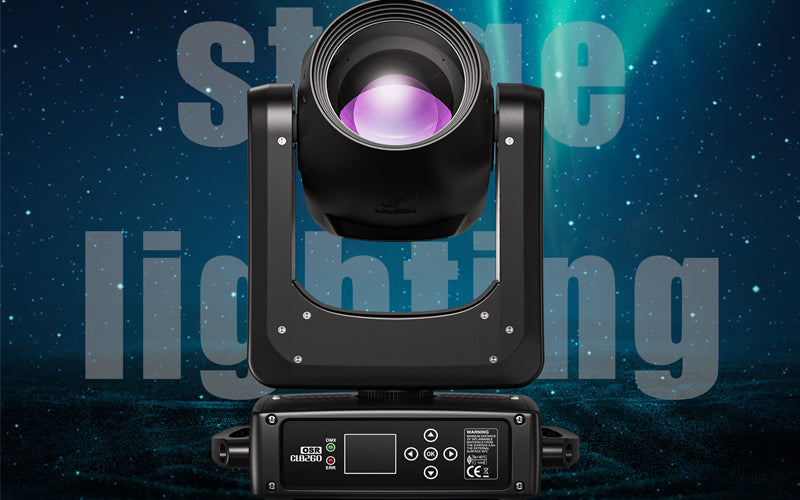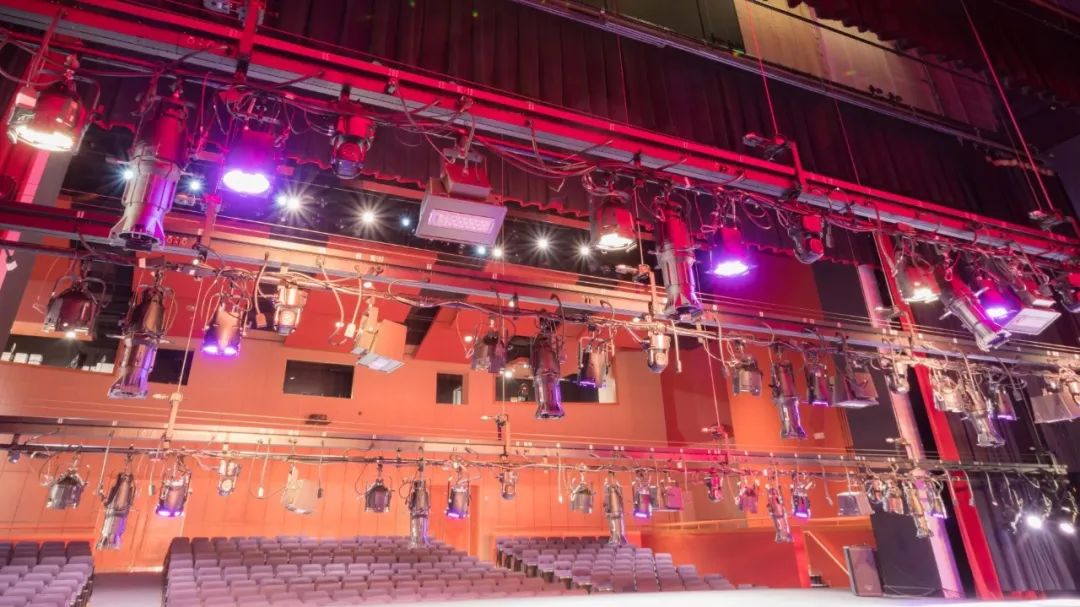En cette période difficile pour l'industrie du spectacle, la réparation des équipements d'éclairage scénique est devenue un moyen essentiel de réduire les coûts. Qu'il s'agisse de projecteurs motorisés ou d'équipements d'éclairage LED, nombreux sont ceux qui recherchent des formations sur la maintenance, l'entretien et le diagnostic de pannes spécifiques.
PCB et composants électroniques
Mais avant de chercher ce petit composant défectueux, quelles autres options s'offrent à vous pour remettre en état de marche tout un ensemble d'équipements d'éclairage, comme des projecteurs motorisés ou des consoles ? Vous avez dépassé le stade de la vérification des ampoules, des fusibles, des câbles et de l'alimentation principale.
Considérons quelques facteurs plus larges.
Dommages physiques
Il peut s'agir d'un boîtier fissuré, de fixations cisaillées ou simplement de poignées manquantes, mais beaucoup de choses peuvent être réparées à ce niveau le plus élémentaire, à condition de se procurer les pièces de rechange. Ces réparations vont au-delà des tâches d'entretien de routine comme le changement d'ampoules ou de filtres à air, mais ne nécessitent généralement pas de connaissances approfondies en électronique ni de diagnostic de panne. La panne est évidente, il suffit d'installer une nouvelle pièce. Si l'équipement est arrêté et que les pièces sont indisponibles ou coûteuses, envisagez d'utiliser des pièces de rechange.
La compétence clé ici est de savoir identifier la pièce endommagée et d'en installer une non endommagée. Dans le même ordre d'idées, on trouve la pratique consistant à fabriquer un seul élément fonctionnel à partir de plusieurs éléments endommagés. Un exemple récent : j'ai transformé douze moteurs CM Lodestar 1T inutilisables en onze moteurs fonctionnels, certifiés par un organisme de test LOLER tiers et réintégrés au parc de location. Certains apprécient acquérir un lot important de luminaires et de pièces anciens et endommagés auprès d'une société de location pour acquérir à moindre coût des projecteurs motorisés.
Attention toutefois : les sociétés de location n'ont pas pour habitude de vendre des biens qui ont encore de la valeur. Il existe donc un risque important à acheter en gros dans l'espoir d'obtenir le meilleur résultat.
Remplacement de la carte ou de l'assemblage et réparations similaires
Ces réparations sont assez courantes pour les techniciens internes des théâtres ou des sociétés de location. Le problème peut provenir d'un capteur, d'un ballast, d'une alimentation ou d'une carte spécifique utilisée pour une fonction particulière. Le diagnostic consiste généralement à identifier la panne à partir des symptômes et à la réduire à un sous-composant de l'équipement. La vérification se fait souvent par substitution (par exemple, en remplaçant une pièce fonctionnelle) et la réparation se fait par le remplacement complet de l'ensemble ou du circuit imprimé défectueux. Cette pièce fonctionnelle peut être achetée auprès du fabricant ou d'un donneur. Dans ce cas, il est conseillé d'avoir sous la main une pièce fonctionnelle, comme un capteur ou un circuit imprimé provenant d'un autre luminaire. Attention toutefois à ne pas mal diagnostiquer la source du problème et à ne pas brûler par inadvertance plusieurs pièces fonctionnelles en les installant dans un équipement défectueux.
Les compétences clés requises sont une compréhension générale du fonctionnement de l'équipement, la conception et la réalisation de tests et de vérifications appropriés pour identifier la pièce défectueuse, et l'installation de la pièce de rechange. Ce niveau est courant chez les techniciens avec lesquels je travaille et que je forme, en particulier ceux qui ont une bonne compréhension technique générale, mais qui ne maîtrisent pas encore parfaitement certains équipements, notamment les projecteurs motorisés et autres dispositifs complexes.
Réparations au niveau des composants
Cette compétence est moins courante et réservée à quelques spécialistes, et ce pour de bonnes raisons. Premièrement, la réparation peut se résumer au remplacement d'un seul composant défectueux, mais son identification requiert un haut niveau de compétence et, surtout, du temps. Le temps multiplié par un haut niveau de compétence est généralement synonyme de coût élevé. C'est pourquoi, dans le secteur de l'éclairage scénique, le remplacement de cartes ou d'assemblages est la norme, à l'instar des pratiques de la réparation automobile moderne. Deuxièmement, les assemblages et les circuits imprimés sont relativement peu coûteux par rapport aux coûts potentiels de main-d'œuvre et au coût de la perte de fonctionnalité.Remplacer l'intégralité du circuit imprimé par un circuit imprimé fonctionnel, sans perdre de temps à identifier chaque composant, est un moyen rapide de remettre l'équipement en état de marche. Le délai de livraison des pièces est sensiblement le même, mais le temps de diagnostic et d'installation est généralement considérablement réduit.
Alors, pourquoi tenteriez-vous de réparer les composants et le PCB ?
Si vous avez du temps mais des moyens limités, une réparation « bon marché » peut être intéressante. L'idée qu'un seul composant, qui aurait pu coûter des milliers d'euros à l'état neuf, puisse être réparé pour une fraction du prix est séduisante. Cependant, cette approche requiert une connaissance approfondie de l'électronique et la patience nécessaire pour diagnostiquer et réparer minutieusement les micro-défaillances. Ce n'est pas pour tout le monde, mais pour ceux qui ont les compétences et le temps, cela peut être une démarche rentable, surtout lorsque les pièces de rechange sont rares ou hors de prix.




Laisser un commentaire
Tous les commentaires sont modérés avant d'être publiés.
Ce site est protégé par hCaptcha, et la Politique de confidentialité et les Conditions de service de hCaptcha s’appliquent.